Whether you’re buying or selling, it’s crucial to understand domain name value.
Sellers don’t want to sell something valuable for less than it’s worth.
Buyers, of course, don’t want to get ripped off.
But why is it so difficult to just figure out the monetary value of a domain?
The transactions often happen anonymously via private sales channels, there’s no cut-and-dry standard for pricing, and the valuations are certainly more complex than the market rate for a pound of lobster.
That complexity in the domain valuation formula is exactly what we’ll get into today. We’ll look at all the relevant factors that influence the domain cost, including market trends, keyword popularity, domain length, domain extension, as well as branding potential, and memorability.
We’ll also examine some tools and services that can help you appraise domain names and conduct transactions.
Related reading: 12 Tips For Choosing The Perfect Domain Name For Your Website
Whether you’re a domain owner, domain investor, digital marketer, or business owner, this guide will break down everything you need to know about domain name value.
The Anatomy Of A Domain
Domain Name
Domain names are like an address for the internet, making it easier to find websites without having to remember a complex string of numbers. They’re also helpful in distinguishing one website from another because each domain name must be unique.
Read MoreBefore getting into valuable domains, we must look closely at exactly what we’re trying to find the value of a domain.
A domain name is a human-readable web address used to identify a specific location on the internet. It serves as a way for users to remember and access websites easily. Domain names are part of the Domain Name System (DNS), a hierarchical system that translates easily memorable names, like www.example.com, into numerical IP addresses that computers use to identify each other on the internet.
Important: A domain is not the same as a URL.
A URL (Uniform Resource Locator) is a more complete web address that specifies the protocol used to access a resource, the domain where the resource is located, and the path to the specific resource on the server.
For example: https://www.example.com/blog/blog-post-title
OK, back to domains…
A domain name consists of two primary components:
- Second-Level Domain (SLD): This refers to the main part of the URL, which most commonly contains the name of the website or the business that owns it. In our example, this is “example.”
- Top-Level Domain (TLD): This is what comes at the end of the domain name, which in our case is .com. Hundreds of TLDs are available, but some of the most popular include .com, .net, .org, .gov, and .edu.
Each of these components plays a role in the valuation.
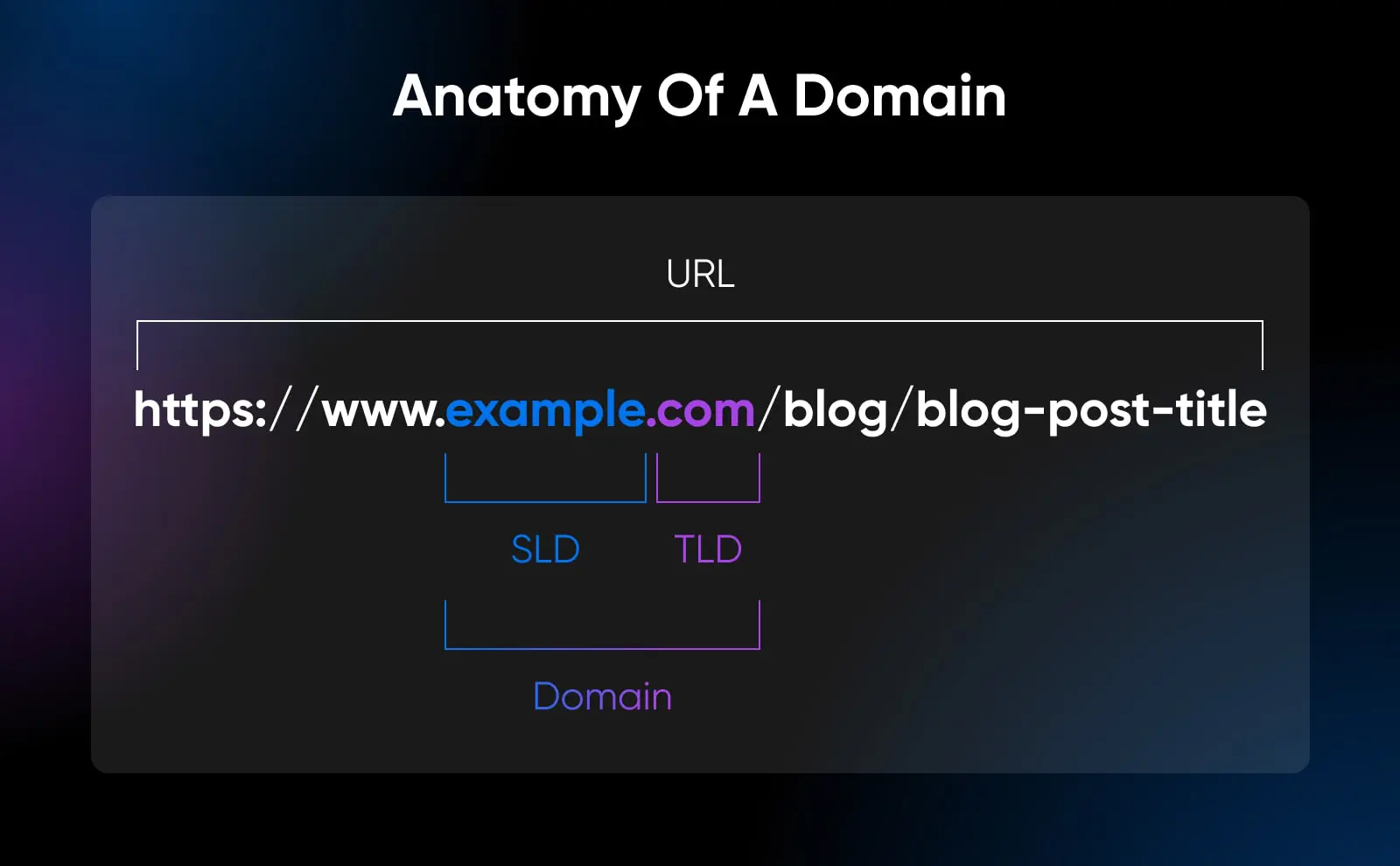
The Factors That Influence Domain Value
Now that you understand the nuts and bolts of a domain, let’s zoom in and discover how various factors might influence the price of a domain for sale.
As mentioned earlier, there are no cut-and-dry domain valuation criteria. The domain market and the negotiation between prospective buyers and sellers will ultimately decide the price, but the factors below are ranked in order of significance.
Length And Simplicity
Generally speaking, the shorter a domain, the more it’s worth. This is particularly true if it’s a single word. This isn’t always the case; brevity alone doesn’t make an otherwise cumbersome domain like zz0xy2c.org more appealing to potential buyers. This is because shorter domains are more memorable, easier to share, and more marketable.
Additionally, we are running out of new single-word domains, so their scarcity makes them more valuable.
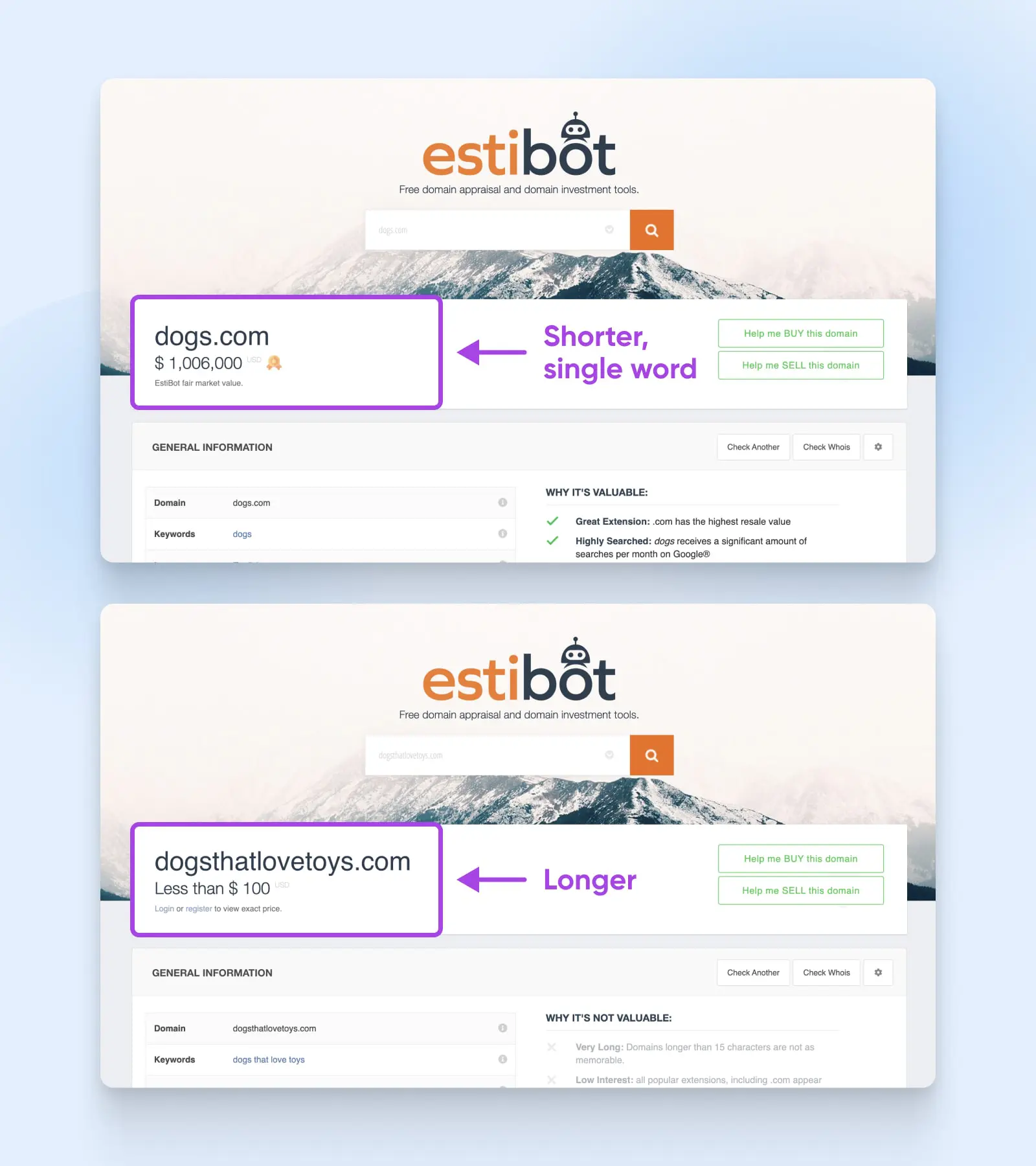
Common Top-Level Domain
A domain’s TLD can be a big part of what makes it desirable. For example, .com remains the most popular option, so many buyers will pay a premium for it. For the foreseeable future, a domain like example.com will cost more than example.xyz.
Brand Potential
While a domain’s brand potential can be difficult to define, it’s also an important consideration many site owners make when choosing a name. Entrepreneurs who start a business want to have a domain name that represents their brand (which could increase their advertising effectiveness) and they’re willing to pay thousands of dollars for them or more, in some cases.
OpenAI bought ai.com for $11 million in 2023.
[bng]
Keywords
Including relevant keywords in your domain name can provide search engine optimization (SEO) benefits. According to a study by Higher Visibility, in most industries, a majority of sites include valuable keywords in their domains. Keywords with inherently high search volume will generally command higher prices.
For example, the top-rated website for the search engine query “hotel” is www.hotels.com. As such, if your domain contains a desirable keyword, this could increase its value.
Related reading: The Top 11 SEO Best Practices for Domains
Spelling
This may seem obvious, but domains with proper spelling are more valuable than those without. Large brands, however, might even buy the domains of common misspellings and redirect them to the official site.
Depending on your brand, however, using unexpected spelling can sometimes be a benefit, as it could make the domain more brandable. For example, fiverr.com and tumblr.com have used technically incorrect spellings to create memorable, lasting brands.
Extension Trends
Certain TLDs may gain popularity due to trends or industry-specific preferences. For example, .io has become popular for business startups; it almost carries a connotation of innovation by itself.
However, .ai has become popular for many businesses in the tech industry as artificial intelligence becomes more commonplace. In fact, usage of .ai has increased over 100% in the last year.
Monitoring extension trends can provide insights into the potential value of a domain.
Existing Traffic
Lastly, a different scenario happens if the domain is already directing traffic to a live website, thereby accumulating traffic. If the domain has an existing audience attached, the buyer can immediately leverage that traffic for their site. The domain age can also help its SEO for the new owner, which may make it even more appealing.
Again, remember that there are no guarantees in the game of domain name valuation. We provide these valuable insights as a general guideline and something to help you make an informed decision when it’s time to buy or sell an actual domain.
Now that you know the basics, let’s outline a process to assess a fair market estimate for your domain (or one you’d like to purchase).
Steps To Determine The Value Of A Domain Name
The art of domain valuation is highly nuanced, as we covered earlier, but there is a detailed analysis and well-defined process you can use to make strategic decisions.
Let’s get started.
Step 1: Research The Purchase History Of Similar Domains
To figure out what people may be willing to pay for your domain name, you need to know what people are charging for similar domains. We mentioned earlier that the value of a given domain can shift dramatically over time, so you probably can’t use what you initially paid for the domain as a baseline.
DN Journal is one of the best places to start this research type.
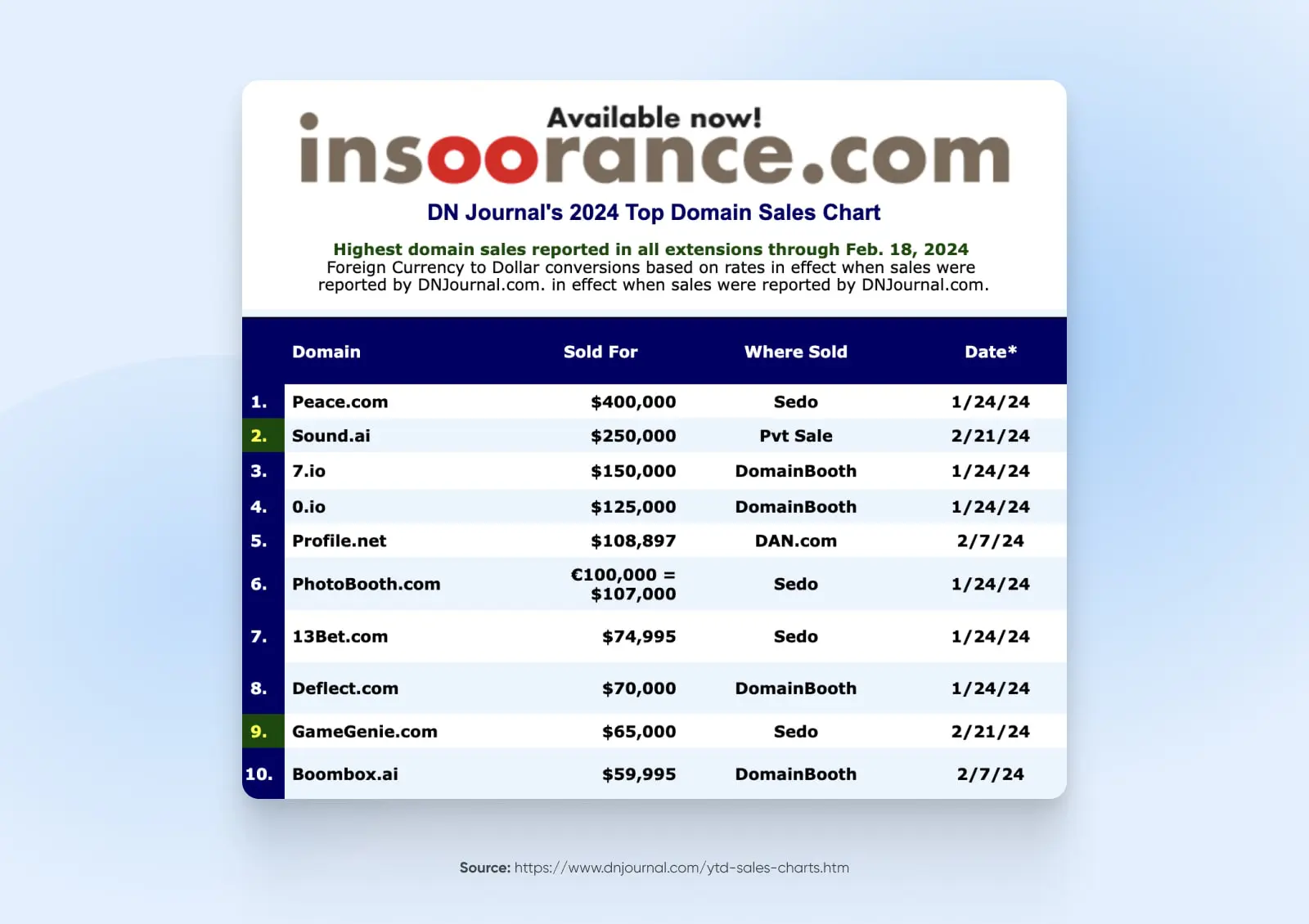
Does it have the worst web design on the internet? Probably. But it’s also one of the most reliable historical domain sales and analysis sources. DN Journal can tell you about the past three weeks’ highest reported sales and also offers some invaluable insights into the domain marketplace in general.
DN Journal updates on a weekly basis — If you want something even more up-to-date, try NameBio, which offers a Live Feed, where you can see domain name sales as they happen. Additionally, an account will allow you to try out “The Domain Game”, where you can guess the price range of real domain sales.
Another site with a similar purpose is Domain Name Wire. You can find regular roundups of prominent, recent domain sales on the blog.
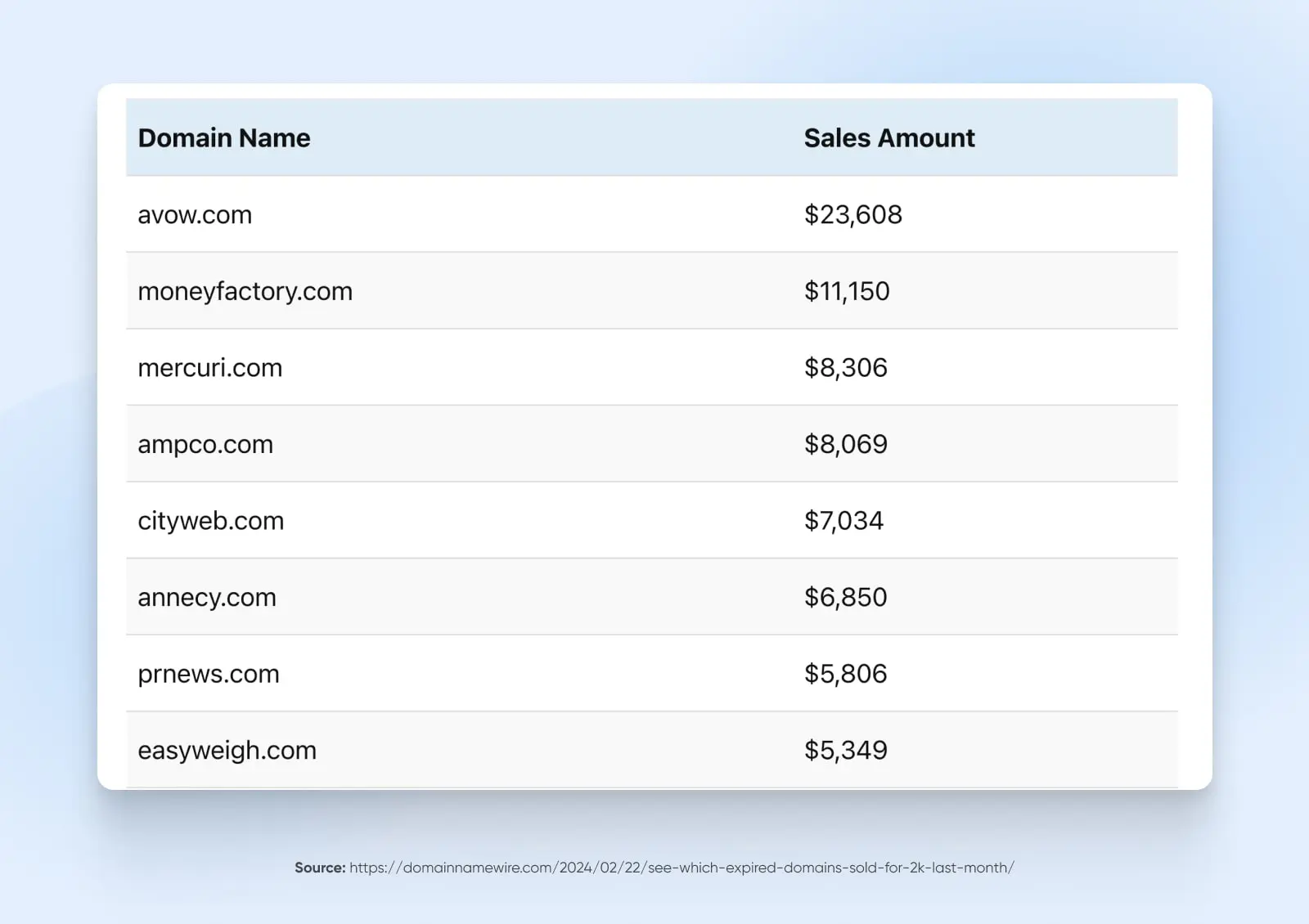
If your domain is concise, you may find ShortNames especially useful. This site also collects recent sales, but specializes in (you guessed it) short domain names.
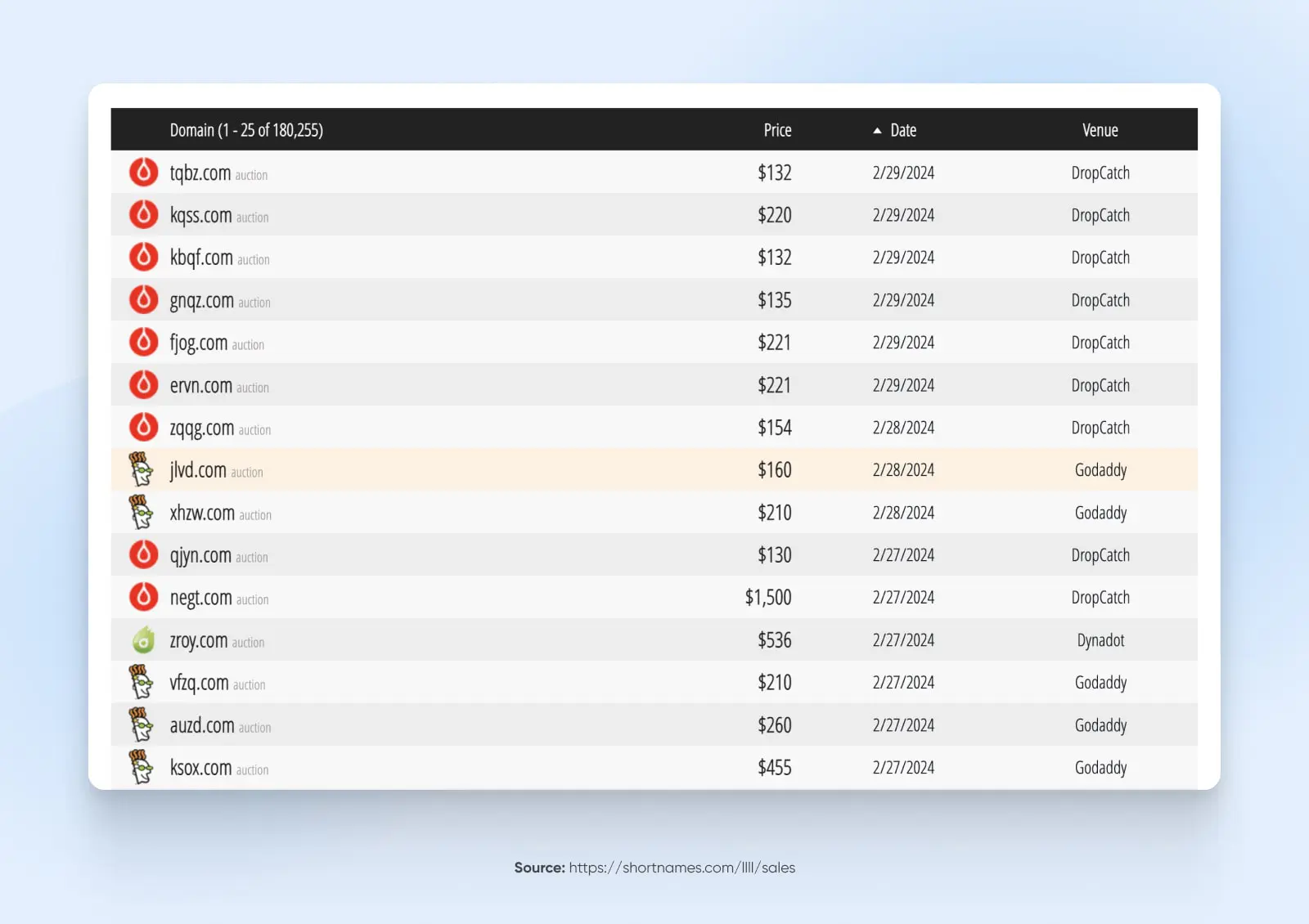
Additionally, you look into other TLDs. DotDB allows you to check how many TLDs have been registered worldwide and what kinds of TLDs have been registered.
For many people, this first step (paired with common sense and shrewd negotiating skills) will give you a reasonable estimate to assess the value of a domain. However, if you want to find information about sales for more directly comparable domains, you will need to dig a little deeper.
Step 2: Use A Domain Name Appraisal Service
A domain appraisal service is a website that enables you to find information about your domain, helping you estimate its value and compare it to similar names.
These services offer domain analysis, compare your domain against similar names, and collect information about what those other domains sold for. It will also measure your domain’s worth, based on many of the factors we outlined previously. If you’re serious about putting an estimated price on your domain, this is one of the easiest methods for getting an educated answer.
You can use many appraisal sites, and some of the largest domain registrars might even have their own built-in service for this.
One of the options for domain valuations is GoDaddy. GoDaddy estimates the price of domains by comparing the length, the TLD, and whether the domain contains common words. You can also view similar domains to see how much they sold for.
If you’re searching for just one or two domain names, you might consider EstiBot. EstiBot is the most widely used domain appraisal tool, and uses an exclusive algorithm to combine keyword data about the domain with historical domain name sales to provide a super detailed report showing how it arrived at the valuations. However, EstiBot allows a limited number of searches before reminding you to check out their subscription plans, or create an account.
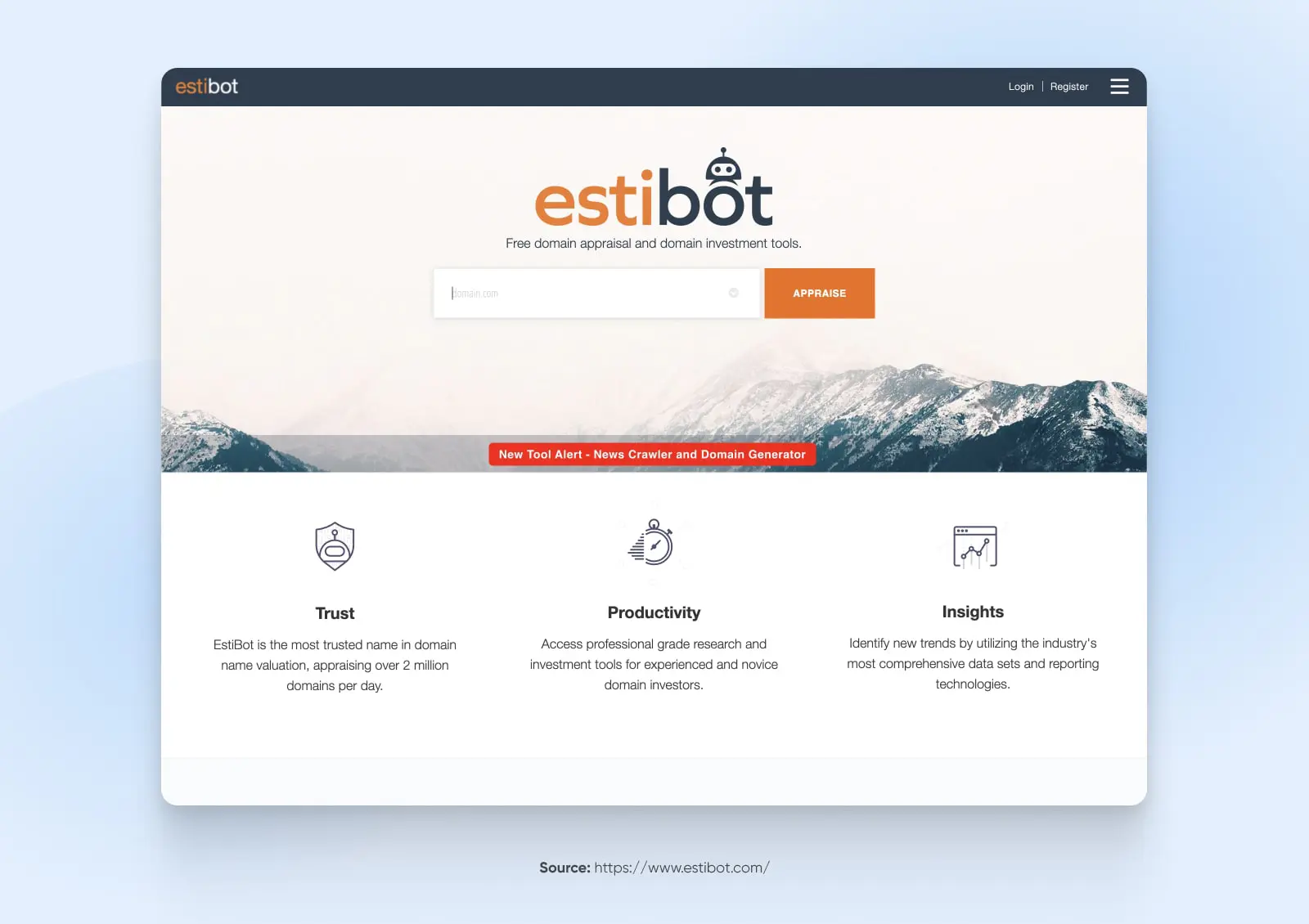
You can view a huge amount of statistics and analytics for the domain, giving you an even clearer picture of its ultimate worth.
Estibot offers a suite of tools beyond its domain value calculator that help investors manage their entire domain portfolios.
This should provide you with a substantial theoretical value for your domain. However, as we’ve already mentioned, a domain’s real value is what someone is actually willing to pay for it. As such, if you want a definite answer, you may need to go straight to your potential buyers.
Step 3: Find Out What People Are Willing to Pay for Your Domain Name
Taking the time to do research and use estimation tools will undoubtedly be useful. Sometimes, you might have to go straight to potential buyers for a definitive answer.
For instance, a domain could theoretically tick many of the boxes we outlined earlier, but still not be one that actually sells. It could be that the domain simply isn’t relevant to anyone, is too similar to an existing prominent site, or has an unfortunate connotation that makes it less desirable.
On the flip side, the opposite could also be true. A domain that shouldn’t be particularly valuable might be just what a particular website owner is looking for. This can make it even more lucrative than anticipated.
The best way to find these things out is by putting the domain name up for sale and seeing what price it fetches. Many domain broker services enable you to buy and sell domains and will also let you set a reserve price for them, similar to how eBay works.
Examples of these services include Flippa, or Squadhelp— Both are online marketplaces for domains. Note that Flippa is a paid service, but their nominal fee might be totally worth it if you think your domain is worth hundreds or even thousands of dollars.
Both sites function as an auction, so you can sit back and watch as the bids roll in, giving an accurate estimate of your domain’s value to real people. If you’re lucky, somebody will take a fancy to your domain and may even bid above the reserve right away. Either way, at the end of this process, you should have a clearer idea of how much your domain name is worth.
Next Steps
If you’re ready to get started in the domain business, we can help! DreamHost specializes in domains by providing an easy interface to search for, purchase, and manage your assets.
If you need website hosting to go along with your domain and sign up with us, we’ll even give you the domain for free!
We hope you found this guide helpful, but more importantly, we hope you do something with it. Whether that’s finding the perfect domain for your website or business or beginning your career as a domain investor.
Get started by browsing all types of domains here!

Your Great Idea Starts with a Domain Name
Don’t let someone else register your URL. Search DreamHost’s 400+ TLDs to find the perfect fit for your website.
